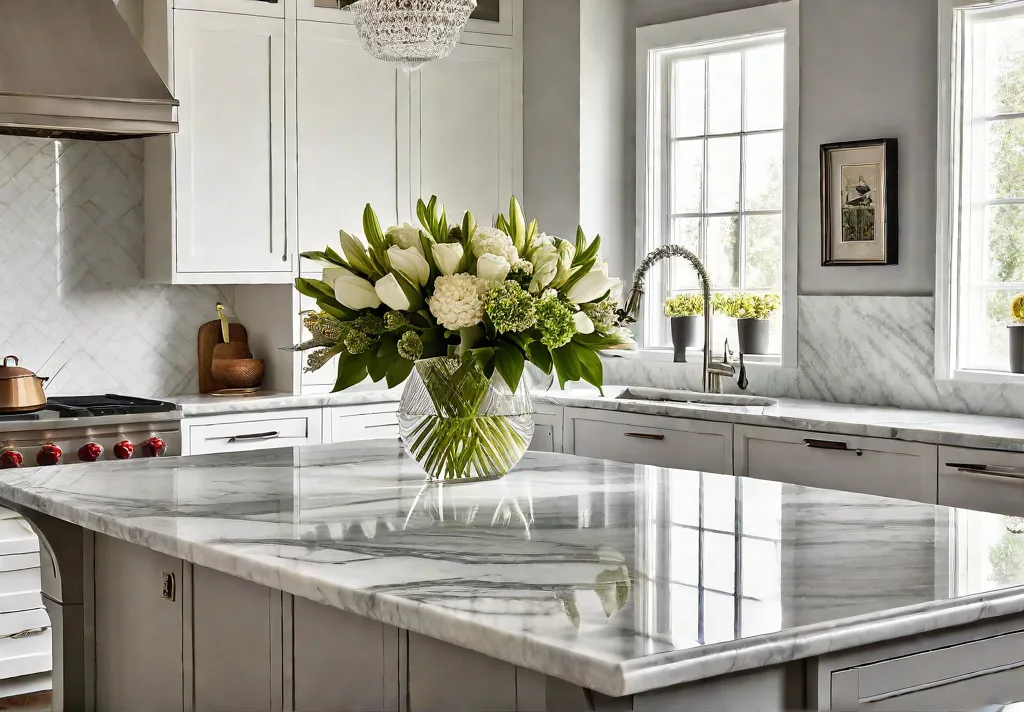In heritage design, few elements hold as much timeless allure as traditional countertop materials. From the classic elegance of marble to the rustic warmth of butcher block, these surfaces have graced homes for centuries; each imbued with a rich tapestry of history and craftsmanship.
As a devotee of storied spaces, I am endlessly captivated by the artistry and character these countertops bring to a kitchen. Each slab and plank whispers tales of the hands that shaped it and the generations gathered around its sturdy form. This tangible narrative breathes life into a space, transforming it from a mere room into a living chronicle of tradition.
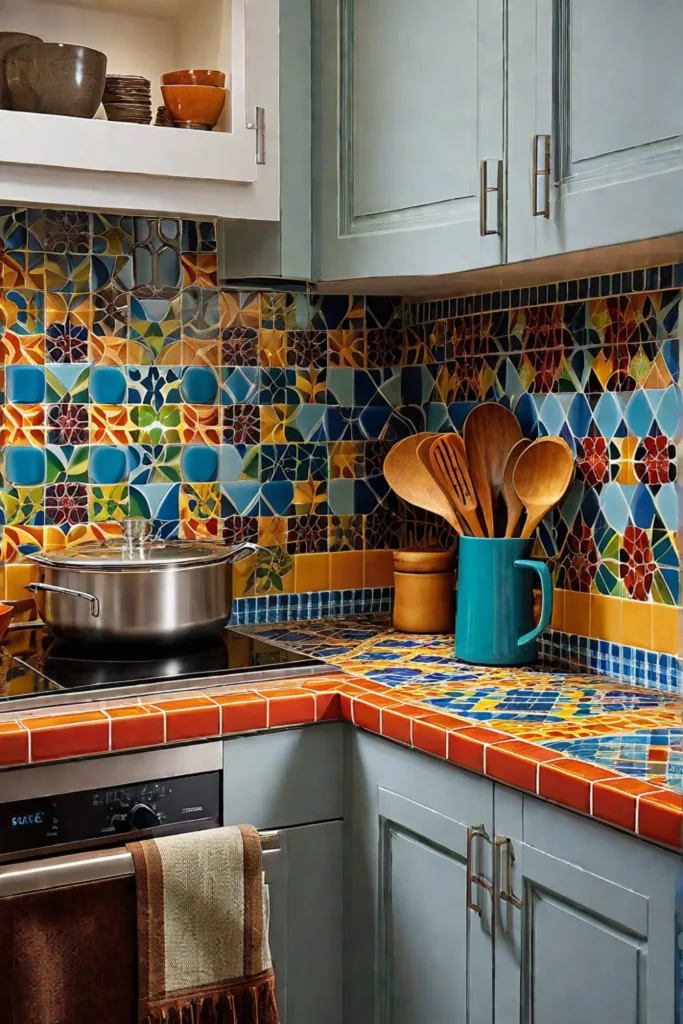
So join me, fellow connoisseurs of heritage design, as we embark on an immersive exploration of marble, quartz, soapstone, butcher block, and tile countertops. Let’s unravel the stories woven into their surfaces and discover how to honor the past while crafting livable and deeply meaningful spaces.
Marble Countertops: timeless elegance and Luxury
Marble is a timeless and luxurious choice for countertops, adding a touch of classic elegance to any kitchen. These natural stone surfaces have been prized for centuries in architecture and sculpture, and their unique veining patterns make each slab a one-of-a-kind masterpiece.
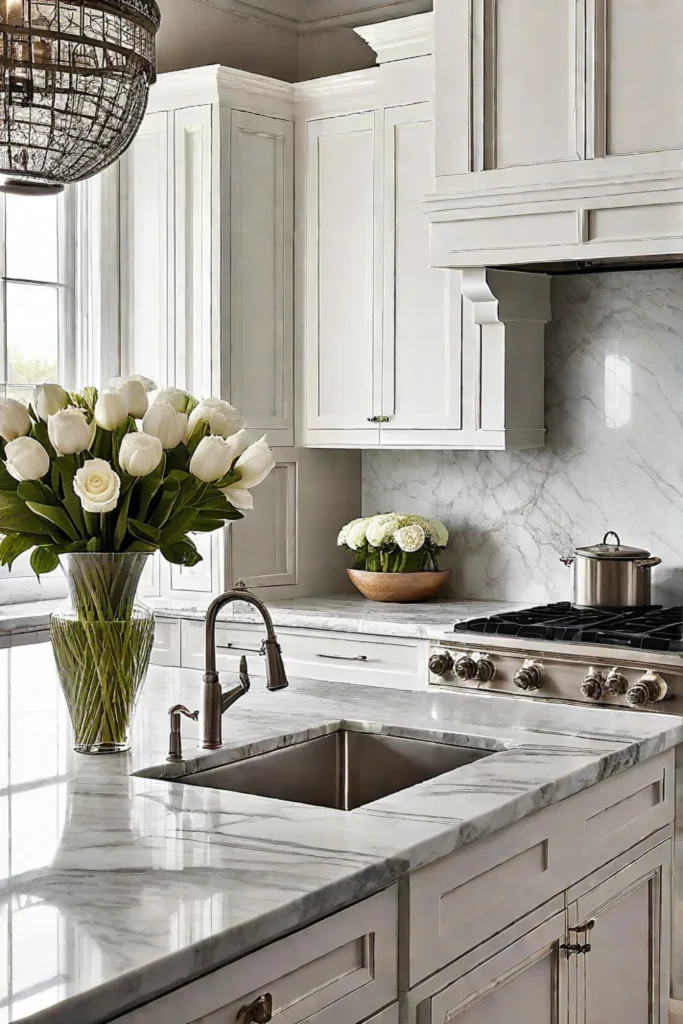
Types of Marble
Calacatta and Carrara are two of the most popular choices regarding marble countertops. Calacatta marble is known for its dramatic veining and luxurious white background, while Carrara marble features softer, more subtle gray veins against a warm white base.
Caring for Marble Countertops
While marble countertops are heat-resistant and durable, they require special care to maintain their beauty. Using coasters and cutting boards is essential to prevent scratches and stains. Regular sealing is also crucial to protect the porous surface from etching and discoloration caused by acidic foods and liquids.
As for finishes, marble countertops can be honed for a matte, velvety look or polished for a glossy, reflective shine. Sealing honed marble countertops more frequently is generally recommended, as the matte finish can show etching more easily.
Speaking of sealing, how often should you seal your marble countertops? The general rule of thumb is to reseal them every six to twelve months, depending on usage and the specific sealant product. But don’t worry; the process is relatively straightforward and will help keep your marble pristine for years.
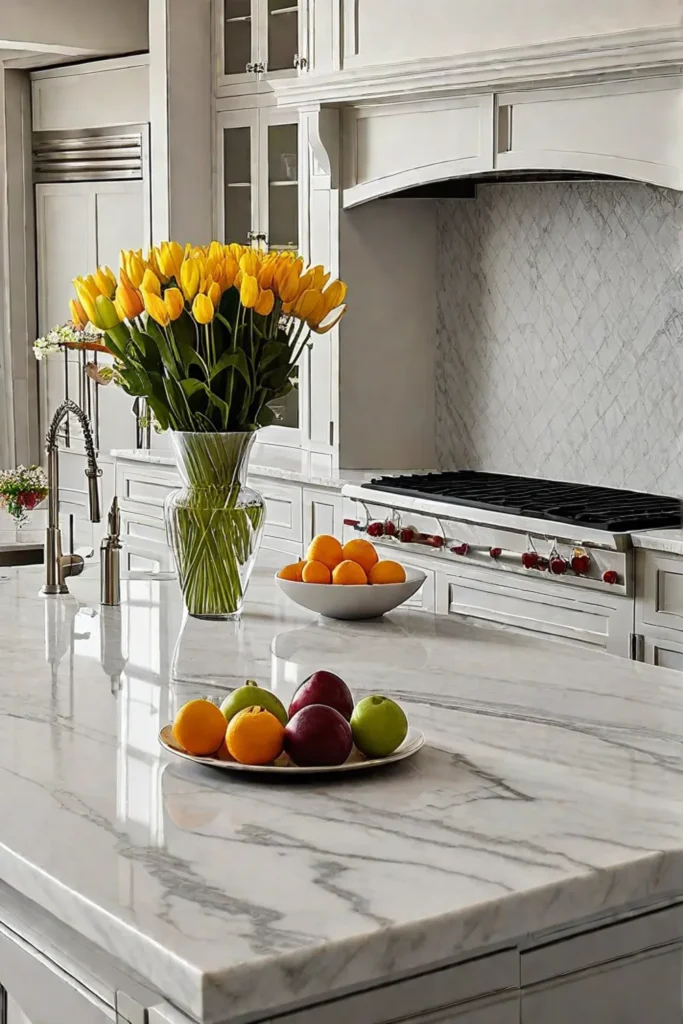
I believe the timeless beauty and luxurious aesthetic of marble countertops are well worth the extra maintenance. With proper care, these stunning surfaces can elevate the look of any kitchen and add a touch of classic elegance that never goes out of style.
While marble is undoubtedly a showstopper, quartz countertops offer a different kind of beauty and performance worth exploring. In the next section, we will explore the world of engineered quartz.
Quartz Countertops: Engineered Beauty and Performance
As a designer, I’ve always been drawn to quartz countertops’ sleek and modern appeal. These engineered surfaces offer a perfect blend of style and functionality, making them a top choice for contemporary kitchens.
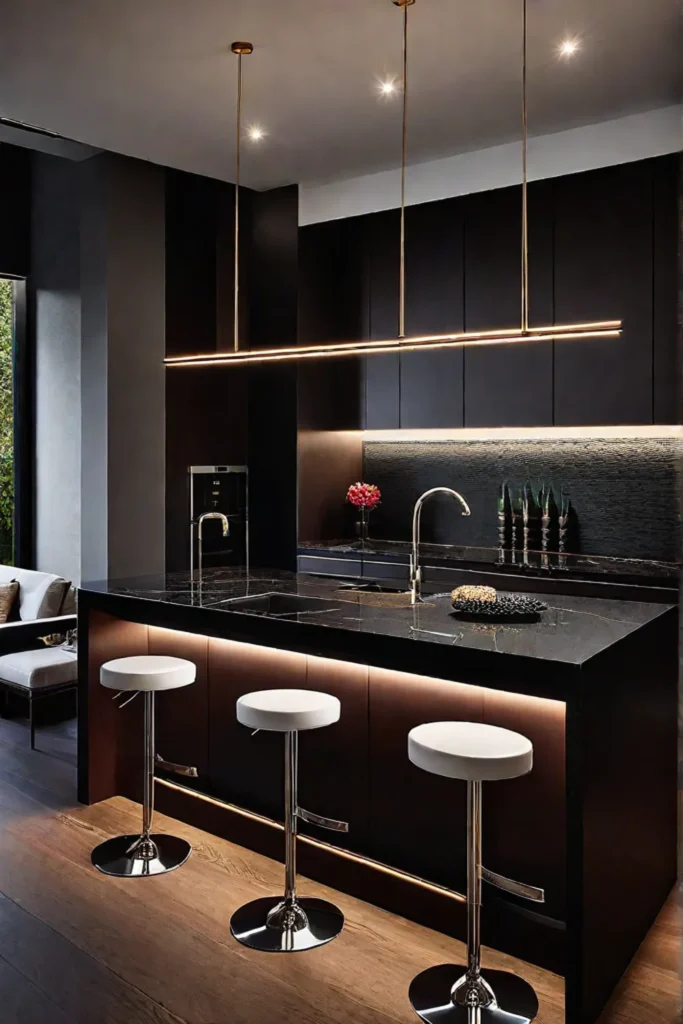
Composition of Quartz Countertops
Quartz countertops are a true marvel of engineering. They are crafted from a mixture of ground quartz (one of the hardest minerals on earth) and resin binders, resulting in a durable and visually stunning surface. The manufacturing process allows for endless possibilities in terms of colors and patterns, from classic solid hues to intricate designs that mimic the beauty of natural stone.
Benefits of Quartz Countertops
One of the biggest advantages of quartz countertops is their low-maintenance nature. Unlike natural stone, quartz is non-porous, which means it won’t absorb spills or stains. This makes it incredibly easy to keep clean and hygienic, perfect for busy households or those with young children. Additionally, quartz countertops do not require sealing, saving you time and effort in the long run.
Another significant benefit is their durability. Quartz is incredibly tough and resistant to scratches, chips, and cracks, ensuring your countertops look pristine for years. And let’s not forget about the variety – quartz countertops come in a vast array of colors and patterns, allowing you to find the perfect match for your kitchen’s aesthetic.
As a designer, I appreciate quartz countertops’ versatility and practicality. They truly offer the best of both worlds—stunning beauty and exceptional performance.
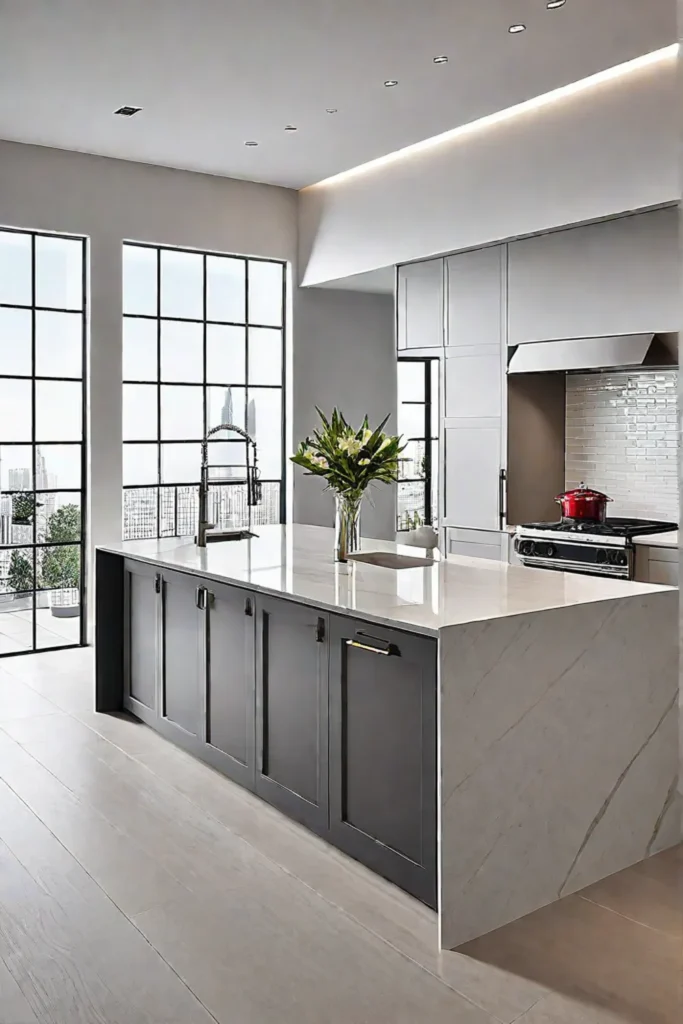
While quartz countertops from different brands may vary slightly in color options and manufacturing processes, they generally share the same core benefits. Quartz countertops are often more affordable than granite and require less maintenance, making them a cost-effective choice for many homeowners.
In summary, quartz countertops are a top contender in kitchen surfaces. They offer a combination of beauty, durability, and low maintenance that is hard to beat. If you’re looking for a countertop that will stand the test of time while elevating the style of your kitchen, quartz is worth considering.
Moving on to a more rustic and earthy option, let’s explore the charm and warmth of soapstone countertops.
Soapstone Countertops: Rustic Charm and Warmth
As an expert in home decor, I’m obsessed with soapstone countertops. These natural beauties exude a rustic charm that instantly warms up any kitchen. Soapstone’s naturally heat-resistant and non-porous properties make it a practical choice, but the unique patina truly sets it apart.
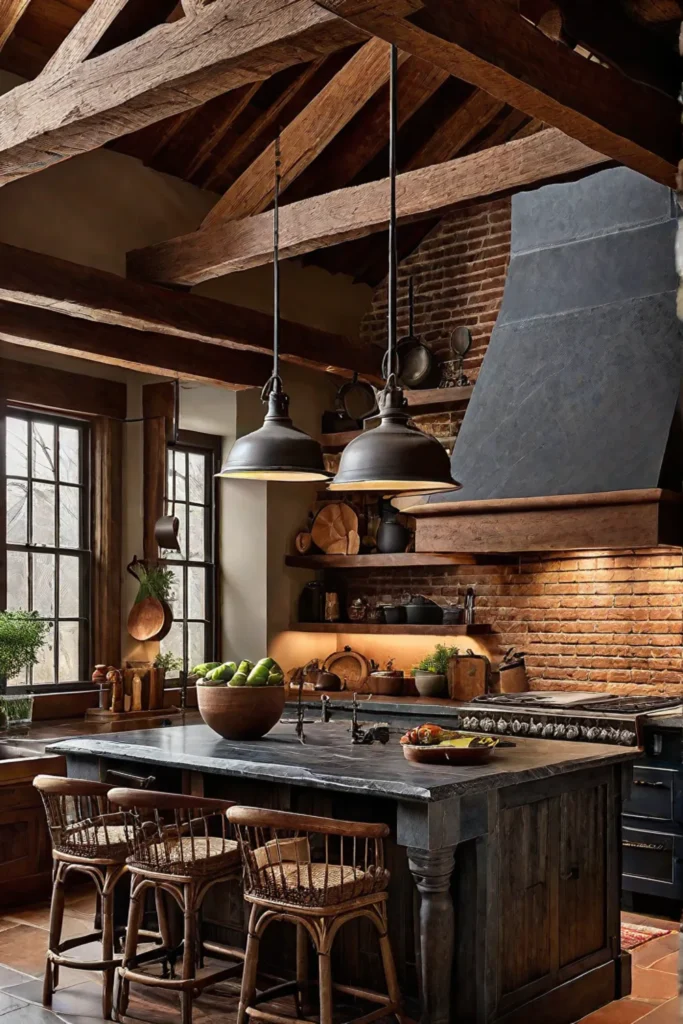
Characteristics of Soapstone
Soapstone is a metamorphic rock composed mainly of talc, chlorite, and other minerals. This dense and durable material has been used for centuries in countertops, sinks, and even fireplaces. Its soft, velvety texture and rich gray hues lend an inviting ambiance to any space. However, it’s important to note that soapstone is susceptible to scratches, requiring a bit of TLC.
Maintaining Soapstone Countertops
As soapstone ages, it develops a beautiful, one-of-a-kind patina that adds character and depth to its appearance. This natural process can be enhanced by regularly oiling the surface, which will darken and enrich the color over time. To keep your soapstone countertops looking their best, use cutting boards and avoid harsh chemicals that could etch or damage the surface. Minor scratches can be buffed out with a light abrasive, but deep scratches may require professional attention.
Soapstone countertops are popular for farmhouses and rustic kitchens, where their warmth and charm truly shine. While they may require more maintenance than granite, their unique character and heat-resistant properties make them a worthwhile investment.
Compared to granite, soapstone is just as heat-resistant but softer and more susceptible to scratches. You can gently buff the surface with fine-grit sandpaper or a soapstone repair kit to remove light scratches. For deeper scratches, it’s best to consult a professional for refinishing.
In summary, soapstone countertops offer a rustic and warm aesthetic that can’t be replicated. With proper care and maintenance, these beauties will develop a stunning patina that adds character and charm to your kitchen for years.
Butcher block countertops offer a warm and functional alternative to traditional countertop materials…
Butcher Block Countertops: Warmth and Functionality
As a lover of natural materials and rustic charm, I can’t help but swoon over the warmth and character that butcher block countertops bring to a kitchen. These beauties, crafted from strips of wood glued together, offer a cozy and inviting atmosphere that perfectly complements traditional or farmhouse-style spaces.
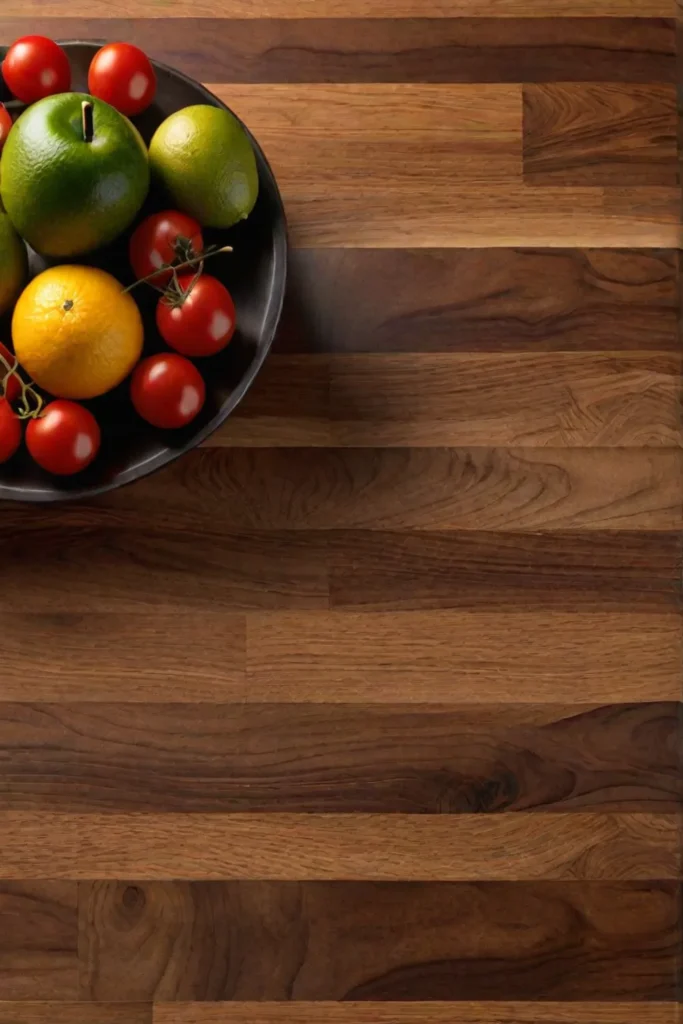
Types of Wood for Butcher Block Countertops
You’re spoiled for choice when choosing the perfect wood for your butcher block countertop. Maple and walnut are two popular options that perfectly balance durability and aesthetic appeal. Maple’s light hue and subtle grain create a bright and airy feel, while walnut’s rich tones and pronounced patterns exude warmth and sophistication.
Caring for Butcher Block Countertops
Now, let’s talk maintenance. These wooden wonders require a little TLC to keep them looking their best. Regular oiling with mineral oil or a food-safe finish is essential to protect the surface from moisture and stains. Trust me, you don’t want to skip this step – a dry, neglected butcher block is a sad sight.
While these countertops are durable enough to withstand some wear and tear, it’s best to avoid placing hot pots and pans directly on the surface. A little prevention goes a long way in preserving the beauty of your butcher block.
Speaking of maintenance, you might wonder: How often should butcher block countertops be oiled? The general rule of thumb is to oil them every few weeks but keep an eye out for signs of dryness or cracking, which may indicate a need for more frequent oiling.
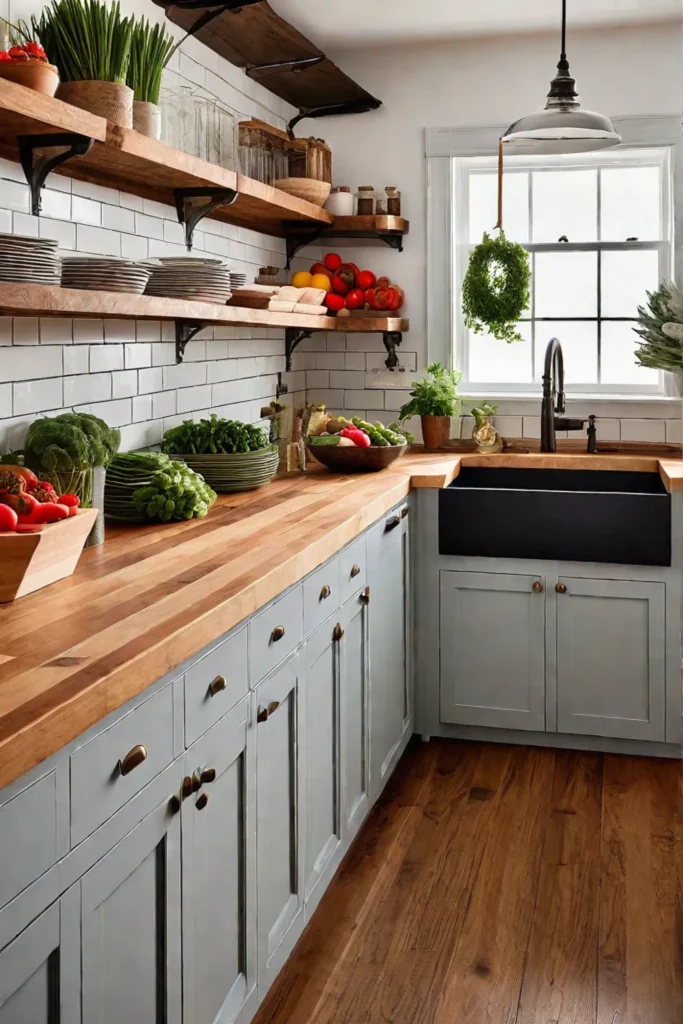
To remove stains, a gentle scrub with a mild abrasive and some elbow grease should do the trick. But if you’re dealing with a particularly stubborn stain, don’t worry—the beauty of butcher block is that you can always sand it down and refinish it, giving it a fresh, like-new appearance.
Key takeaways: Butcher block countertops offer a warm and inviting touch to your kitchen but require regular oiling and maintenance to prevent drying and cracking. With a little love and care, these beauties will be the envy of all your guests.
Now, let’s move on to another classic countertop option that offers versatility and endless design possibilities: tile countertops.
Tile Countertops: Versatility and Design Options
As a designer passionate about unique and personalized spaces, I’m thrilled to dive into the world of tile countertops. These surfaces offer versatility and customization that make a kitchen stand out.

Types of Tile for Countertops
The beauty of tile countertops lies in the vast array of materials available. The options are endless, from classic ceramic and porcelain to eye-catching glass and natural stone. Each material brings its own distinct character, allowing you to create a countertop that perfectly complements your design vision.
Designing with Tile Countertops
The possibilities for creative expression regarding tile countertops are limitless. Subway tiles, mosaic patterns, and intricate designs can transform a simple surface into a work of art. And let’s not forget the grout—by selecting a contrasting color, you can add depth and dimension to your masterpiece.
One of the best things about tile countertops is that they allow homeowners to personalize their space truly. Whether you prefer a sleek, modern aesthetic or a rustic, Mediterranean vibe, a tile option will bring your vision to life.
Now, let’s address the elephant in the room – grout lines. While adding character, they require regular cleaning to maintain that fresh, pristine look. But fear not, my design-savvy friends! Sealing the grout can make this task a breeze and keep those lines looking their best.
The pros of tile countertops are their unmatched versatility, endless design options, and ability to create a truly unique space. The cons are that grout maintenance is a must, but this is a small price to pay for such a stunning surface.
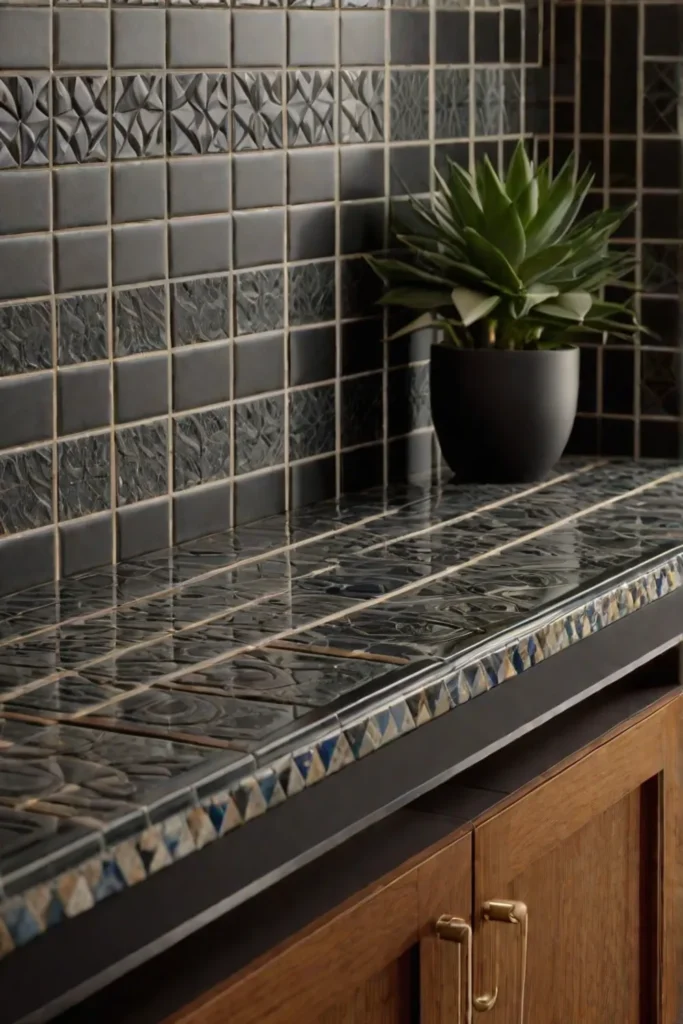
We recommend considering the overall design scheme when choosing the right grout color. A contrasting hue can highlight the tile pattern, while a matching grout can create a more seamless look. But don’t be afraid to get creative—sometimes, the unexpected choice makes a space memorable.
The possibilities of tile countertops are limitless, and the only limit is your imagination. So, let’s embrace the versatility of these surfaces and create spaces that are as unique as the people who inhabit them.
Now, let’s tie everything together and leave you inspired to explore the world of traditional countertop options.
Final Thoughts
In the ever-evolving design landscape, few elements possess traditional countertop materials’ enduring charm and soul-stirring narrative. From the timeless elegance of marble to the rustic warmth of butcher block, these surfaces transcend mere function, becoming canvases upon which the rich tapestries of our lives are woven.
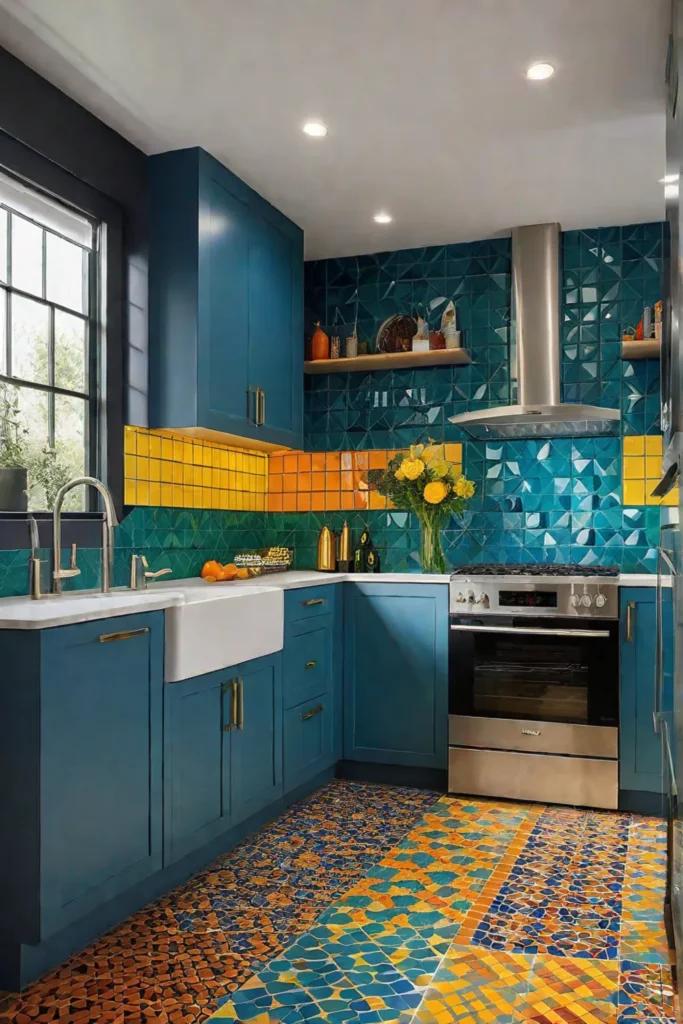
As custodians of heritage design, it is our sacred duty to preserve these treasures and honor the craftsmanship and traditions that have shaped them over centuries. Yet, our role extends beyond mere preservation—it is to breathe new life into these materials, harmonize the past with the present, and create spaces that resonate with authenticity and meaning.
So, let us embrace the patina of age, the depth of character, and the whispers of history these countertops offer. For in their timeless beauty lies the power to transform our homes into sanctuaries of story, where every surface echoes the narratives of those who came before us and those who will follow.
